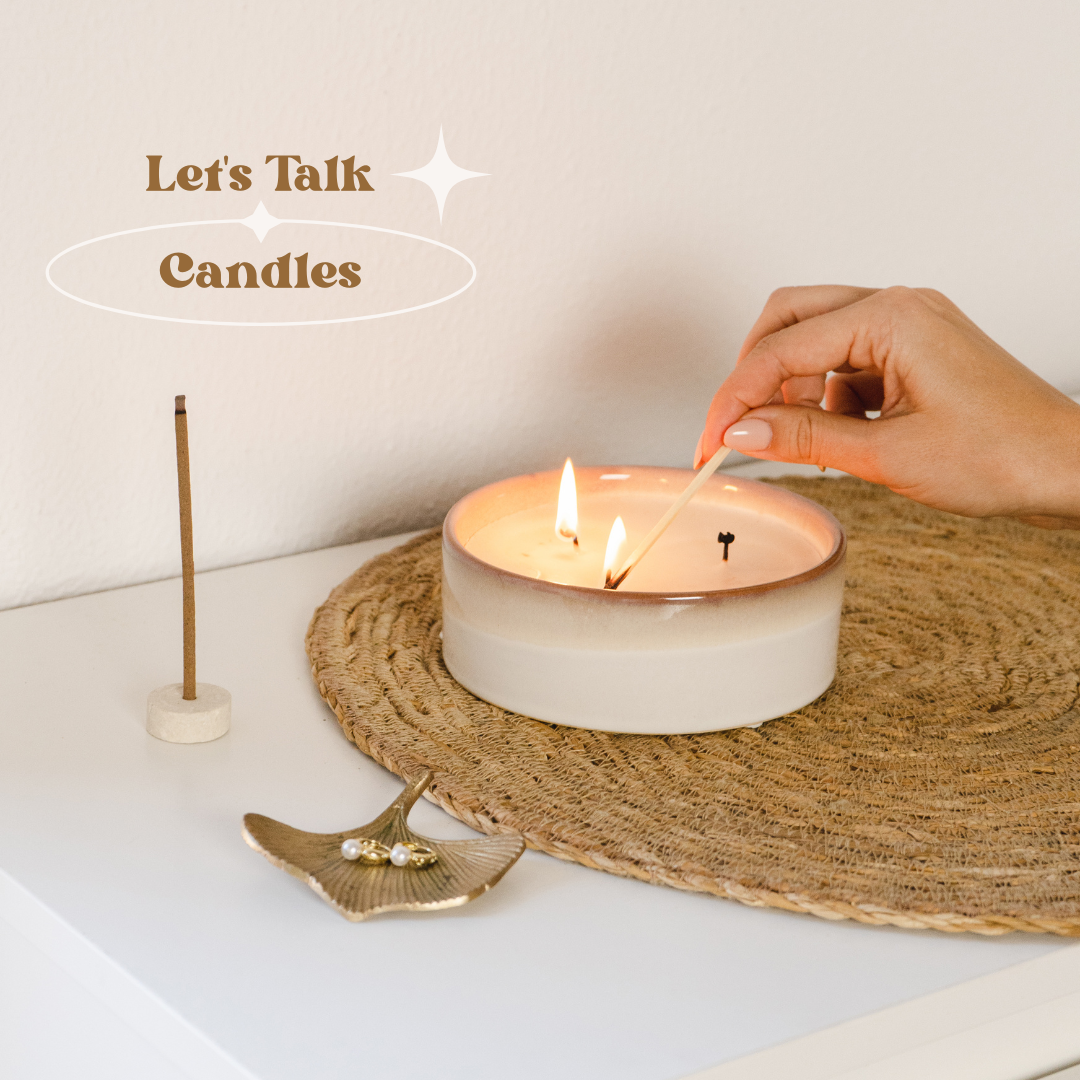Let’s Talk: Candles
Did you know that so many of the delightful candles that we use to create the best ambiance over dinner or to bring a fresh scent to our home, are actually full of so many chemicals?! It’s true, and it’s terrible. We are really into the calming effect of candles around here, too, which is why we need to have a little chat.
Almost all candles on the market are full of toxic chemicals like paraffin, fragrance, and soy (yes even soy is toxic). I know making changes can be difficult, but choosing to change out your normal taper candles or favorite scented candle can make a huge impact on your overall health. The good news is that there are options on the market that are clean burning, clean scented, and even some that clean the air itself!
The Wax
According to a 2017 study in the International Journal of Tropical Disease and Health, paraffin candles emit pollutants that can threaten human health and shouldn’t be burned in enclosed areas.
Most candles are made from paraffin, a petroleum byproduct. To create paraffin wax candles, petroleum waste is chemically bleached, deodorized, and made into wax. When burned, paraffin wax can release toxic volatile organic compounds (VOCs) into the air, including known carcinogens like:
- alkenes
- acetone
- benzene
- toluene
These are the same chemicals found in diesel fuel emissions and are known to cause allergies, asthma attacks, and skin problems.
A 2005 study published by the University of South Florida showed that candles made of paraffin wax emit low levels of benzene even when they are not lit.
Beeswax and coconut wax are really the only wax options out there that give a cleaner burn, and some studies have shown that as beeswax candles burn they actually pull toxins as they ionize the air. Negative ions bind with toxins which helps remove them from the air providing a cleaner environment for you and your family. You can read more about that here.
Is burning candles bad for you?
In addition to releasing toxic chemicals, burning paraffin wax produces soot composed of particulate matter such as, PM2.5 and ultrafine particles that can remain suspended in the air for hours. According to the University of South Florida study, ultrafine soot particles are similar to diesel exhaust in both their size and composition. They penetrate deeply into the lungs and are absorbed into the blood stream.
Ultrafine particles are associated with severe health issues, including:
- allergies
- asthma
- respiratory tract infections
- heart attacks
- strokes
- cancer
Chemical fragrances
Another problem with scented candles is that the chemicals they use to create the scent are toxic.
Most scented candles use synthetic fragrances and dyes that give off dangerous VOCs even at room temperature.
Commonly emitted VOCs related to the scent in candles include:
- formaldehyde
- petroleum distillates
- limonene
- alcohol
- esters
These harmful chemicals can cause health problems, such as:
- headaches
- dizziness
- allergy symptoms
- asthma attacks
- respiratory tract infections
- cancer
Wicks
Many candles have cored wicks made from cotton that are wrapped around a metal core. They do this to help keep the wick from falling over into the wax, however, it releases trace amounts of heavy metals.
After determining that these wicks could present a lead poisoning hazard to young children, the U.S. Consumer Product Safety Commission banned the manufacture and sale of all candles with lead-core wicks in 2003, so Zinc and tin have been used as a substitute since the ban.
However, all metal-core wicks release trace amounts of heavy metals into the air when they are burned. Wicks with zinc and tin cores can still release small amounts of lead particles.
Conclusion
Candles definitely add a certain ambiance and the fragrance can keep your space smelling fresh, but since they bring a slew of toxic chemicals into your home, choosing to find alternative natural air fresheners and clean-burning candles is key.
We are big fans of bees wax candles and there are so many great companies out there that use beeswax and essential oils for their scents. When shopping for clean burning beeswax candles, make sure they are 100% beeswax or coconut wax, or a blend of both, but be careful to read the ingredients because sometimes they will be blended with soy or paraffin wax.
Candles we love:
Here are some really great beeswax candle options:
The Earthly Shop is a local Redding gal who is just lovely and makes the best beeswax based products.
Fontana Candle Company is a family owned small business and makes clean burning beeswax candles that are scented with essential oils only.
Summer Solace Tallow uses a blend of beeswax and tallow with essential oil blends and is in a beautiful vessel.
Alternatives:
There are also some really great alternative ways to keep your space smelling fresh:
Simmer spices. Place spices such as cinnamon sticks, cloves, and nutmeg in a pot of water and let it simmer on the stove.
Use essential oils for fragrance. Essential oils can be placed in a diffuser or in bathwater to create a desired aroma.
Create potpourri. Dried items such as flowers, berries, fruit rinds, wood chips, and spices can be placed in bowls or fabric bags and placed around your home.





